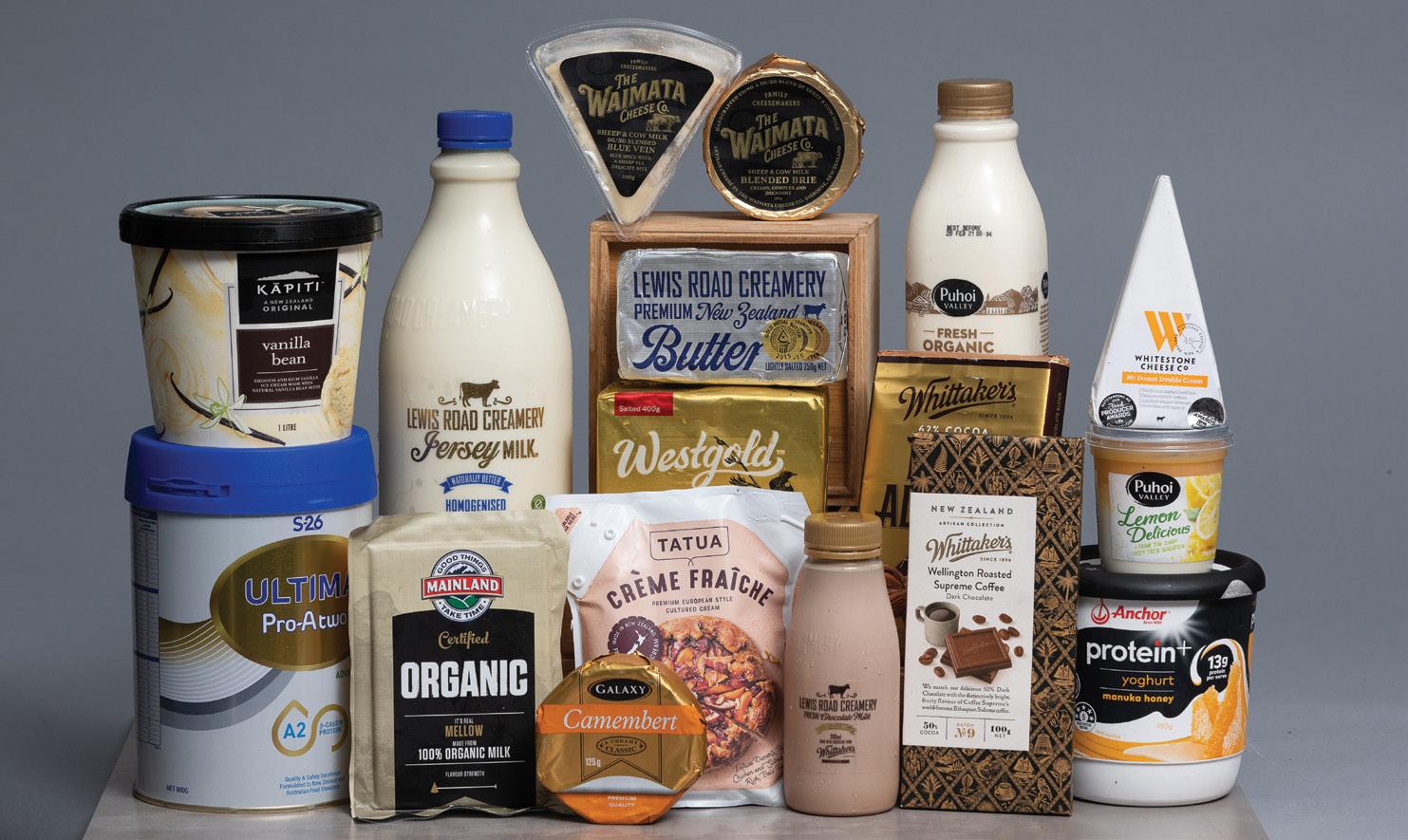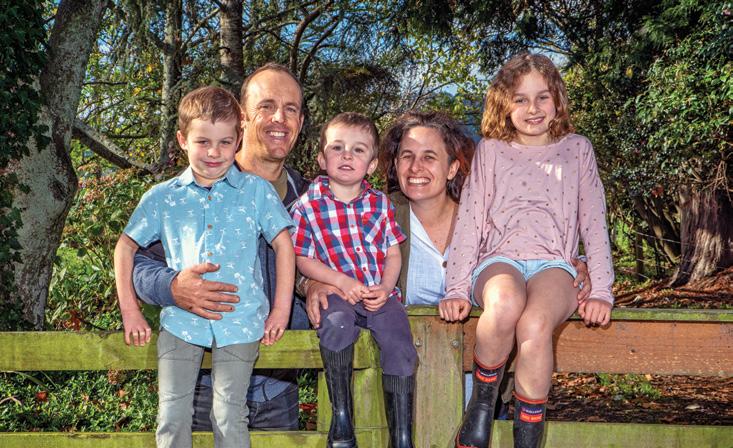MILKING PLATFORM BAY OF PLENTY
The tiny grenades of terror
Bridie Virbickas sent this photo of her dahlias and Jersey cows because the photos of the facial eczema cows were definitely not as pretty!
Summer 2021 in the Eastern Bay of Plenty was the worst for facial eczema in 20 years. Bridie Virbickas is now spore counting paddocks to make sure her herd is safe.
I
t has been a cracking autumn in the Bay of Plenty. Slightly cooler temperatures to slow down the summer grasses, but warm enough for the ryegrass to rocket. Regular rain to keep things humming, but not too much to make it too wet. It is the recipe for a great end to the season. However, for many farmers in the Eastern Bay of Plenty, it has been a recipe for disaster. This summer has been the worst for facial eczema that the vets have seen in the last 20 years. There have been farmers who have never had a case of facial eczema on their property before who have had to dry off a large portion of the herd in a matter of days. Out of my 650 lovely Jersey cows, 70 have been badly affected so far. They haven’t all shown clinical signs of photosensitivity which has been interesting but very worrying. Blood tests taken from those cows have shown severe liver damage. I have had two of these cows die of liver failure and two put down who were on their way out. None of these cows have shown signs of having eczema in
the past so the consensus seems to be that they have had enough exposure to the spores over the past few years to have an accumulative effect on the liver. Then the leve of spores this year was the final straw. I decided to take random blood tests from my “healthy” milkers, 10 from each herd, to see if it was widespread. 85% of those tests came back confirming liver damage. This would explain the drop in production from 1.3 to 0.9kg MS/cow in about 5 days. We have zinc bolused our milkers for the past five years. When people would ask “have you had any eczema?” I would confidently respond “No, we zinc bolus our herd, it’s a big job but it’s worth it!” Bolusing had given me a false sense of security. I thought my girls were safe from this horrible disease. Turns out, no amount of zinc can combat the astronomical spore counts that we are seeing. The farms that have been affected have all been using different forms of zinc in different ways, whether it be oxide in the feed, mono or heptahydrate in water, or bolusing like we do.
Dairy Exporter | www.nzfarmlife.co.nz | May 2021
I have been frantically spore counting paddocks ahead of my cows to make sure they are “safe”. I have had to drop out a handful that have been over 100,000 which I will leave until later to graze with dry cows. It’s hard to believe those tiny little grenades of terror can do so much damage. Usually I have relied on spore counts done in my area to follow the degree of danger, but now I will do spore counts myself throughout the summer to avoid areas that pose the most threat to my cows. Different management options are something we need to think about. If spore counts are high, rather than being all grass most of the summer, we may have to think about feeding supplements to reduce the amount of spores they are eating, and making silage with the high risk paddocks. This would certainly be more costly in the short term, but in the long term, the health and longevity of the cows are what generate the income. I haven’t worked out yet how much this eczema outbreak has cost, both in animal health costs and loss in production, but I have a feeling it would cover the cost of making and feeding more supplements. Food for thought. The effects of facial eczema are heartbreaking. For those farmers in my area that don’t do any zinc treatment, I would compare that to not wearing a seatbelt. You’re fine until you have a crash, then you are screwed. 11


























